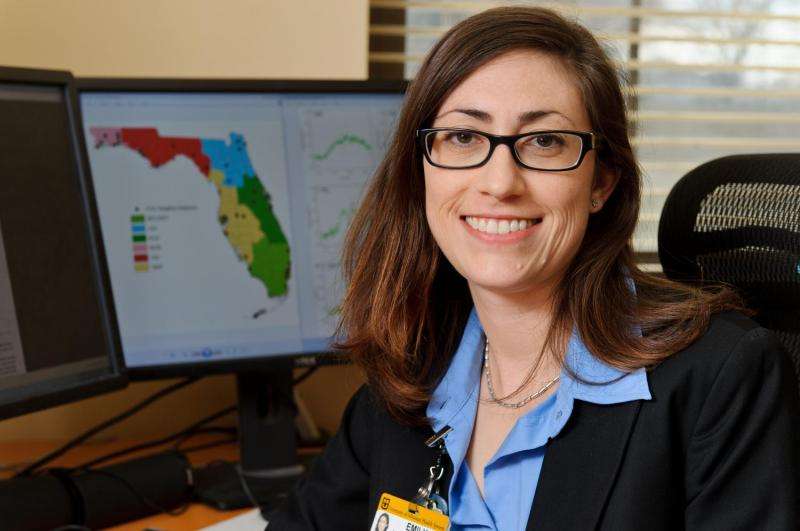New heat wave formula can help public health agencies prepare for extreme temperatures

Extreme heat can pose several health risks, such as dehydration, hyperthermia and even death, especially during sustained periods of high temperatures. However, a uniform definition of a heat wave doesn't exist. As a result, public health agencies may be unsure of when to activate heat alerts, cooling centers and other protective measures. A University of Missouri School of Medicine researcher has developed a uniform definition of a heat wave that may help public health agencies prepare for extreme temperatures.
"According to climate models, temperatures in Florida are predicted to increase over the next 100 years, yet there can be confusion regarding what constitutes a heat wave," said Emily Leary, Ph.D., assistant research professor in the Biostatistics and Research Design Unit at the MU School of Medicine and lead author of the study. "As temperatures rise, it's important to have a uniform definition that best allows public health agencies to prepare for heat waves, whether that means issuing more frequent heat advisories or opening more cooling stations. Using Florida as our model—a state known for its heat—we set out to develop a data-driven definition of a heat wave that can be used for public health preparation. This formula can be adapted and applied to other parts of the country as well."
The U.S. National Weather Service currently initiates heat alert procedures when the heat index—the perceived temperature in relation to humidity—is expected to exceed 105 to 110 degrees Fahrenheit, depending on the area. However, the United Nations' Intergovernmental Panel on Climate Change defines a heat wave as five or more consecutive days with maximum temperatures approximately 9 degrees Fahrenheit higher than normal. These definitions become confusing when different sources use differing methods to define climatology norms, Leary said.
Additionally, the definitions may not be suited for certain regions, such as Florida, because the area may have consistently high temperatures and fewer true seasons, which do not account for extreme temperatures or resident acclimation. Previous research also has shown that using local or region-specific meteorological thresholds better reflect a temperature extreme for a certain area.
Leary's definition, which is informed by previous research, factors in relative and absolute heat index thresholds for a given region and time. The temperature must exceed the 80 percent relative heat index threshold, meaning the heat index must be higher than 80 percent of the region's temperatures for a given period. In addition, a region also should have at least three non-consecutive days with a heat index above an absolute regional heat index threshold, a predetermined temperature based on regional climates.
For example, in Pensacola, Florida, a heat index higher than 100.6 degrees Fahrenheit for three days means that the area has the potential to experience a heat wave. A heat index higher than 110 degrees Fahrenheit for three days would be considered a heat wave.
"This formula better explains when a heat wave is occurring because it accounts for missing weather data and better captures what extreme heat means for a region," Leary said. "Because this formula uses National Weather Service regions, there also is an existing infrastructure to communicate alerts."
The study, "Identifying Heat Waves in Florida: Considerations of Missing Weather Data," recently was published in PLOS ONE, an international, peer-reviewed and open-access publication. Research reported in this publication was supported by the Centers for Disease Control and Prevention under grant number U38-EH000941 awarded to the Florida Environmental Public Health Tracking Network Implementation. The content is solely the responsibility of the authors and does not necessarily represent the official views of the funding agency.
Journal information: PLoS ONE
Provided by University of Missouri-Columbia


















